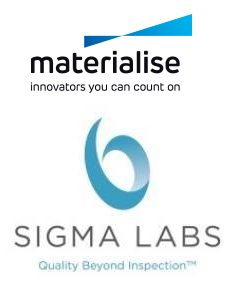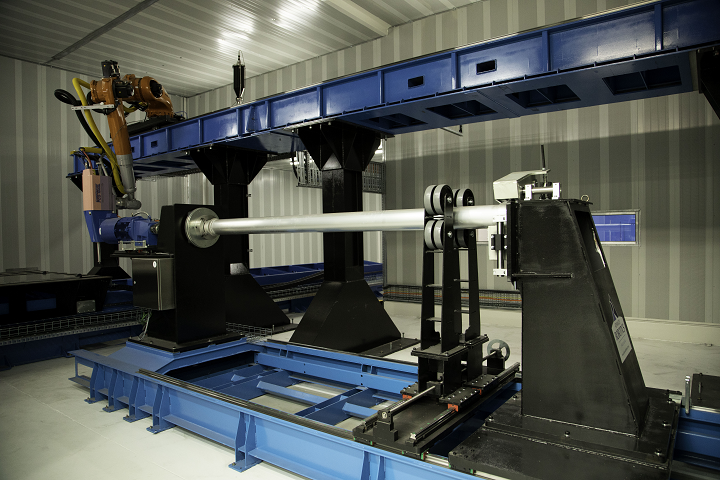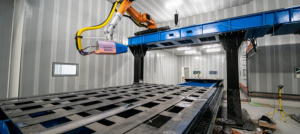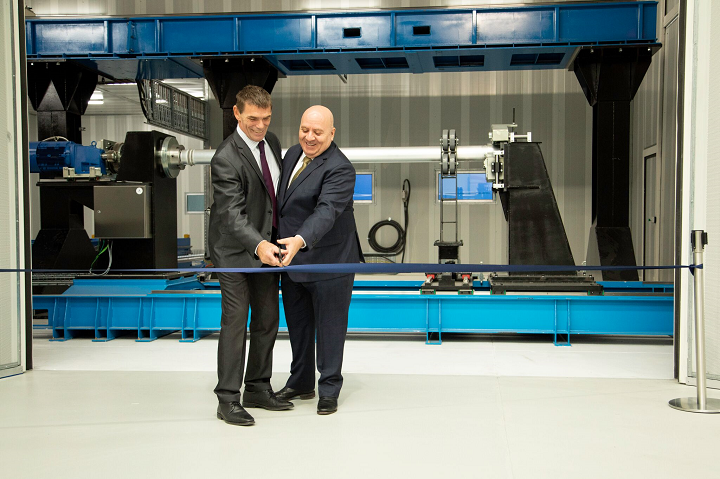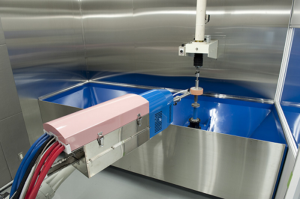Starting with a little business in today’s 3D Printing News Briefs, Materialise has signed an MoU with Sigma Labs, and Carpenter Technology Corporation launched an additive manufacturing business unit, while Ampower just released a metal 3D printing technology map. Moving on to news about 3D printers, 3D Potter has introduced a compact version of its Scara clay 3D printer, and a UK service bureau installed an HP Jet Fusion 4200 system.
Materialise and Sigma Labs Sign MoU
Back in 2014, Sigma Labs signed an agreement with Materialise to integrate its PrintRite quality inspection technology into the Belgian company’s 3D printing software. Now, five years later, the two companies have entered into a non-binding Memorandum of Understanding (MoU) in order to evaluate this integration together.
The mission behind the MoU is, according to MarketScreener, “to create an integrated product solution composed of sophisticated control technology enhanced with in-situ process monitoring for metal additive manufacturing.” Materialise and Sigma Labs have a shared vision to ultimately set up a formal licensing agreement, or a formal joint marketing collaboration, for a truly integrated product.
Carpenter Launches Additive Business Unit
 Carpenter Technology Corporation has been working to build on its reputation as a metal powder supplier in order to become a leader in the 3D printing industry, and it appears to have worked. Recently, the company launched a new business unit, called Carpenter Additive, which offers a wide range of products and services, such as finished component production capabilities, metal powder lifecycle management solutions, and integrated AM and R&D facilities. The new business unit even made an appearance at the recent RAPID + TCT 2019.
Carpenter Technology Corporation has been working to build on its reputation as a metal powder supplier in order to become a leader in the 3D printing industry, and it appears to have worked. Recently, the company launched a new business unit, called Carpenter Additive, which offers a wide range of products and services, such as finished component production capabilities, metal powder lifecycle management solutions, and integrated AM and R&D facilities. The new business unit even made an appearance at the recent RAPID + TCT 2019.
“From powder production to manufacturing and finishing parts, the full spectrum of our capabilities is what differentiates Carpenter Additive from the rest of the AM industry. We are revolutionizing how customers approach this disruptive technology by offering end-to-end solutions through an array of technical expertise, powder production, parts production, and material lifecycle management,” said Carpenter’s President and CEO Tony R. Thene. “Carpenter Additive is working with our customers and driving industry-wide change.”
Ampower Releases New Technology Map
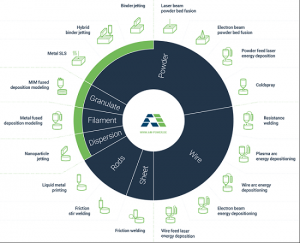 Metal 3D printing consultancy Ampower is working to prepare for its metal additive manufacturing report, which will be released at formnext in Germany this fall. While compiling the report, Ampower closely studied all of the available metal AM technologies and counted them up, arriving at a total of 18 falling into seven different categories, including powder, wire, and granulate. In addition, Ampower analyzed the supply chain and counted up nearly 90 different metal AM machine vendors. Now, the consultancy has put all of its findings together in a high-resolution metal AM technology map, which can be downloaded from Ampower’s website.
Metal 3D printing consultancy Ampower is working to prepare for its metal additive manufacturing report, which will be released at formnext in Germany this fall. While compiling the report, Ampower closely studied all of the available metal AM technologies and counted them up, arriving at a total of 18 falling into seven different categories, including powder, wire, and granulate. In addition, Ampower analyzed the supply chain and counted up nearly 90 different metal AM machine vendors. Now, the consultancy has put all of its findings together in a high-resolution metal AM technology map, which can be downloaded from Ampower’s website.
“In our Technology Map for Metal Additive Manufacturing, we subdivide the procedures based on the ASTM / ISO 52900,” Ampower wrote on its website. “However, methods are now known that elude a known classification. Systems from vendors such as Vader and Fabrisonic use completely new approaches to energy input and raw materials. However, these technologies still have a relatively young degree of maturity. In addition, it should be noted that even with the same classification, the procedures may still differ. For example, the technology of 3DEO can only be classified as binder jetting as it incorporates a milling process at the same time.”
To learn more, download the metal AM technology map today.
3D Potter Launches Compact Version of Scara V3 3D Printer
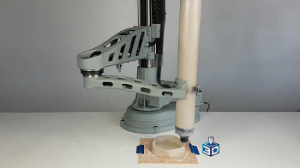 Florida-based company 3D Potter, formerly known as DeltaBots, makes low-pressure, high-powered 3D ceramic printers. These delta-style printers are completely dedicated to 3D printing ceramics and pottery, and the company is now the 3D printer manufacturer for over 200 aerospace and defense entities, research facilities, and universities. Recently, 3D Potter introduced a lightweight, compact version of its Scara V3 – the 3D Potterbot Scara Mini V1, which has no air compressor and features a single joint Selective Compliance Articulated Robot Arm (SCARA), which operates on a rotational x and y-axis. The printer’s 200 ml extruder is easy to clean, and there’s no weight limit for final 3D printed products, which achieve high accuracy and even consistency with no air bubbles. The Scara Mini V1 is fully capable of 360° multiple object printing.
Florida-based company 3D Potter, formerly known as DeltaBots, makes low-pressure, high-powered 3D ceramic printers. These delta-style printers are completely dedicated to 3D printing ceramics and pottery, and the company is now the 3D printer manufacturer for over 200 aerospace and defense entities, research facilities, and universities. Recently, 3D Potter introduced a lightweight, compact version of its Scara V3 – the 3D Potterbot Scara Mini V1, which has no air compressor and features a single joint Selective Compliance Articulated Robot Arm (SCARA), which operates on a rotational x and y-axis. The printer’s 200 ml extruder is easy to clean, and there’s no weight limit for final 3D printed products, which achieve high accuracy and even consistency with no air bubbles. The Scara Mini V1 is fully capable of 360° multiple object printing.
“The other advantage for universities and architectural departments is that it can do architectural objects. It can actually print inside an object,” explained 3D Potter president Danny Defelici.
To see the new Scara Mini V1 in action, take a look at the video below.
Design Reality Service Bureau Installs HP Jet Fusion 4200
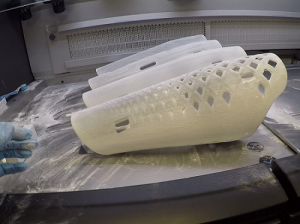 UK industrial design consultancy and service bureau Design Reality, headquartered in Wales, is made up of design and electronics experts who work to create products for clients in the medical, industrial, and consumer industries. Recently, the company made the decision to install an HP Jet Fusion 3D 4200 3D printer in order lower outsourcing requirements and improve upon its design and production capabilities, which will in turn provide its customers with a consistent, end-to-end solution and faster turnarounds. Since the system was installed, Design Reality has already attracted some new customers.
UK industrial design consultancy and service bureau Design Reality, headquartered in Wales, is made up of design and electronics experts who work to create products for clients in the medical, industrial, and consumer industries. Recently, the company made the decision to install an HP Jet Fusion 3D 4200 3D printer in order lower outsourcing requirements and improve upon its design and production capabilities, which will in turn provide its customers with a consistent, end-to-end solution and faster turnarounds. Since the system was installed, Design Reality has already attracted some new customers.
“Our ambition is to make lives healthier and safer with the products that we design. We want to leverage any advantage we can to improve product development quality, performance and speed of delivery,” said Graham Wilson, the Owner and Design Director at Design Reality. “The technology offered in the HP Multi jet Fusion HP 3D 4200 enables reliable prototyping and additive manufacturing, providing quality products into the hands of our clients, faster and at a lower cost. Our clients no longer have to wait for conventional tooling and manufacturing processes, and the investment that is associated with it.”
Design Reality is mainly sticking with HP’s Nylon 12 material in order to lower waste, and is using HP’s subscription pricing, which is the first pay-per-use subscription model in the industry, for its materials.
Discuss these stories and other 3D printing topics at 3DPrintBoard.com or share your thoughts in the Facebook comments below.

